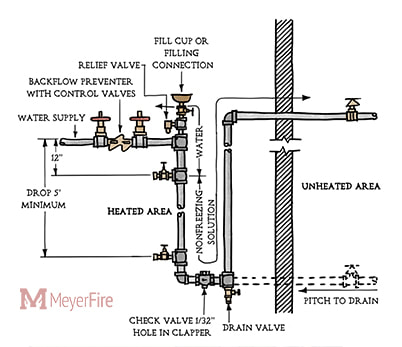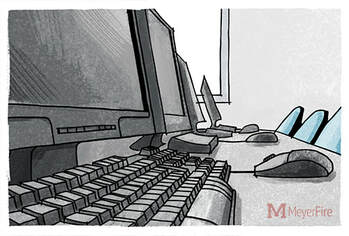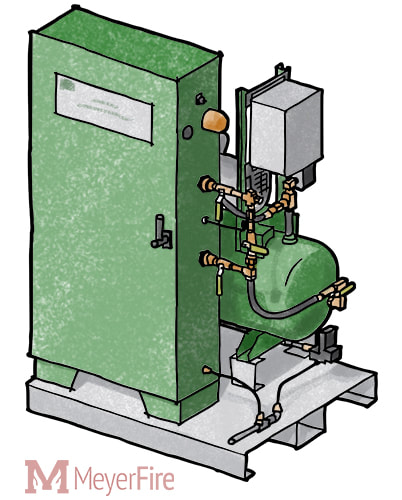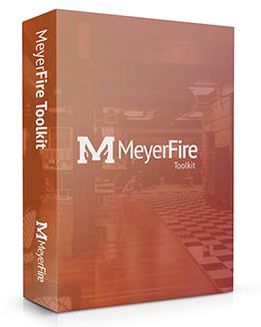|
Hope your 2019 is off to a great start! Here's the big industry impacts I'm excited to be following in the upcoming year.
Tyco's UL Certified Antifreeze Solution  Tyco (Johnson Controls) debuted a big industry shakeup over the end of 2018 with their new UL Certified pre-mixed antifreeze solution. A tragic apartment kitchen fire in 2010 activated a nearby sprinkler as part of an antifreeze solution with too high of a glycerin concentration, resulting in an "explosion" when contacting the flame. This and two other incidents quickly prompted an investigation by NFPA and its Fire Protection Research Foundation, which resulted in TIAs (Tenative Interim Amendments) to limit the use of antifreeze in new sprinkler systems. These TIAs required that antifreeze solutions must be listed for use in sprinkler systems. Until now (eight years later), no such listed solution was available on the market. This new antifreeze solution offers an alternative to dry systems for temperatures as low as -10 deg F (-23.3 deg C), and are listed for use with CPVC.  Upcoming PE Exam Changes While the 2019 Fire Protection PE Exam doesn't appear to hold any major changes from the 2018 version, this is the last year that is planned to be a pencil and paper, all-resources-allowed version of the PE Exam. In 2020, NCEES (with SFPE's support) is planning to move the exam to be computer-based and potentially only permit portions of reference material to be available via PDFs. These changes might not seem big on the surface, but with them the exam experience will change fairly dramatically - going from a personalized collection of customized notes, examples and self-made binders to more of a standardized approach similar to NICET exams. Because of the uncertainty around the 2020 exam, I suspect there will be a good handful of PE candidates that if eligibile would opt to take the 2019 exam over being the "guinea-pig" on the new 2020 exam format. There's plenty more to be discussed and released by both NCEES and SFPE concerning the new computerized exam format, but it'll certainly be something I'll be tracking around here in the coming year. MeyerFire in 2019 Thanks to the high level of interest and feedback for this site, everything is full-steam around here. The past year was phenomenal around here and I saw a major uptick in interest for the 2018 PE Prep Guide (two-thirds of examinees had it when they took the exam), the Weekly Exam Series, and the launch of the Toolkit. In 2019 I hope to continue to improve upon the weekly blog series with highly-visual and hopefully helpful content, release a 2019 edition of the PE Prep Guide, and work towards a long-awaited fire protection reference guide - basically a book of helpful charts, graphs, and visuals for inspectors, designers, and engineers. Why This Site Exists This site was built to start the conversation. I really would like to emphasize that I am not an end-all expert in the field. Much of what I've posted here as it relates to my own experience or industry guidance is already available. What makes the emphasis of this site different is that it's all about bringing together experts in different fire protection factions to discuss and share best practices. It's about improving your workflow and your knowledge with resources and ideas, and giving a medium for you to share your expertise for other's gain as well. If you're new to the blog or the website - welcome! We're well suited for a great year.
Michele Rivarola
1/4/2019 02:22:52 am
In wet pipe systems the biggest problem is not so much corrosion ascribed to the presence of air (dissolved oxygen) but MIC from sulphur reducing bacteria. I am not aware of a silver bullet for MIC but it is usually evident from the rotten egg smell in water drained from wet pipe systems and is an absolute curse. Comments are closed.
|
ALL-ACCESSSUBSCRIBEGet Free Articles via Email:
+ Get calculators, tools, resources and articles
+ Get our PDF Flowchart for Canopy & Overhang Requirements instantly + No spam
+ Unsubscribe anytime AUTHORJoe Meyer, PE, is a Fire Protection Engineer out of St. Louis, Missouri who writes & develops resources for Fire Protection Professionals. See bio here: About FILTERS
All
ARCHIVES
April 2024
|
MeyerFire
- Blog
- Forum
-
THE TOOLKIT
- SUBMIT AN IDEA
- BACKFLOW DATABASE*
- CLEAN AGENT ESTIMATOR*
- CLOUD CEILING CALCULATOR
- DOMESTIC DEMAND*
- FIRE FLOW CALCULATOR*
- FIRE PUMP ANALYZER*
- FIRE PUMP DATABASE*
- FRICTION LOSS CALCULATOR
- HANGER SPACER*
- IBC TRANSLATOR*
- K-FACTOR SELECTOR*
- NFPA 13 EDITION TRANSLATOR ('19 ONLY)
- NFPA 13 EDITION TRANSLATOR ('99-'22)*
- LIQUIDS ANALYZER*
- OBSTRUCTION CALCULATOR
- OBSTRUCTIONS AGAINST WALL*
- PITOT CONVERTER
- PLUMBING FIXTURE COUNTS
- QUICK RESPONSE AREA REDUCTION
- REMOTE AREA ANALYZER*
- SPRINKLER DATABASE*
- SPRINKLER FLOW*
- SYSTEM ESTIMATOR*
- TEST & DRAIN CALCULATOR
- THRUST BLOCK CALCULATOR
- TRAPEZE CALCULATOR
- UNIT CONVERTER
- VOLUME & COMPRESSOR CALCULATOR
- WATER STORAGE*
- WATER SUPPLY (US)
- WATER SUPPLY (METRIC)
- UNIVERSITY
- PE Exam
- LOGIN
- PRICING
- OUR CAUSE

MeyerFire.com is a startup community built to help fire protection professionals shine.
Our goal is to improve fire protection practices worldwide. We promote the industry by creating helpful tools and resources, and by bringing together industry professionals to share their expertise.
MeyerFire, LLC is a NICET Recognized Training Provider and International Code Council Preferred Education Provider.
All text, images, and media Copyright © 2023 MeyerFire, LLC
We respect your privacy and personal data. See our Privacy Policy and Terms of Service. The views, opinions, and information found on this site represent solely the author and do not represent the opinions of any other party, nor does the presented material assume responsibility for its use. Fire protection and life safety systems constitute a critical component for public health and safety and you should consult with a licensed professional for proper design and code adherence.
Discussions are solely for the purpose of peer review and the exchange of ideas. All comments are reviewed. Comments which do not contribute, are not relevant, are spam, or are disrespectful in nature may be removed. Information presented and opinions expressed should not be relied upon as a replacement for consulting services. Some (not all) outbound links on this website, such as Amazon links, are affiliate-based where we receive a small commission for orders placed elsewhere.





 RSS Feed
RSS Feed
